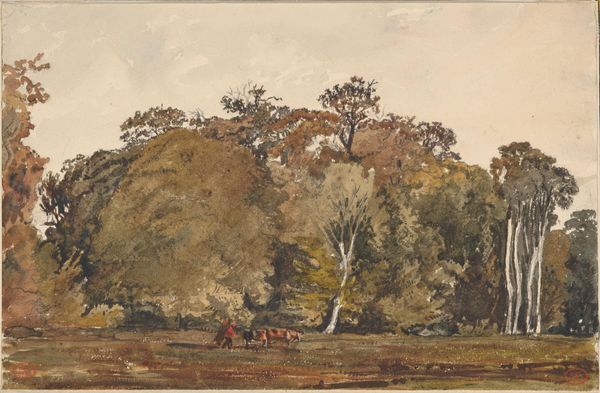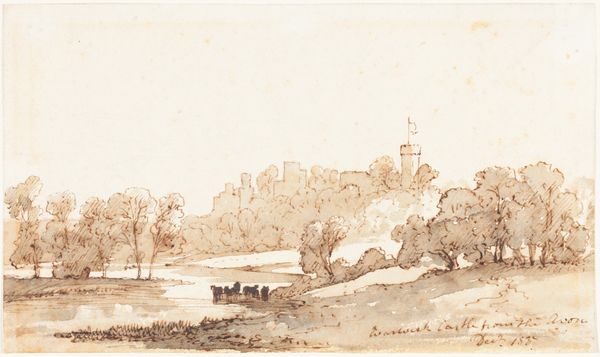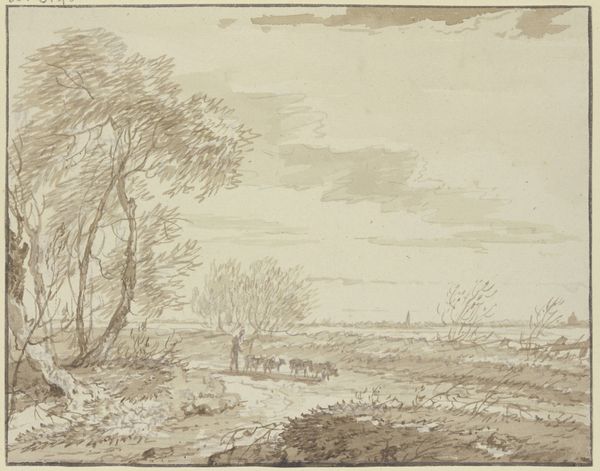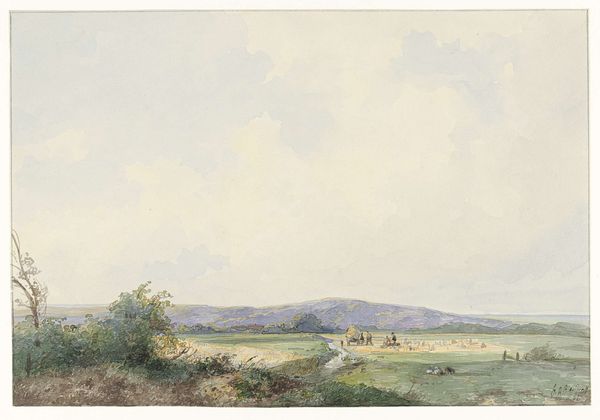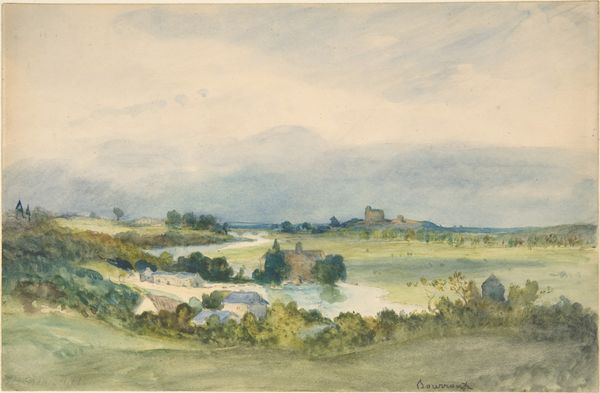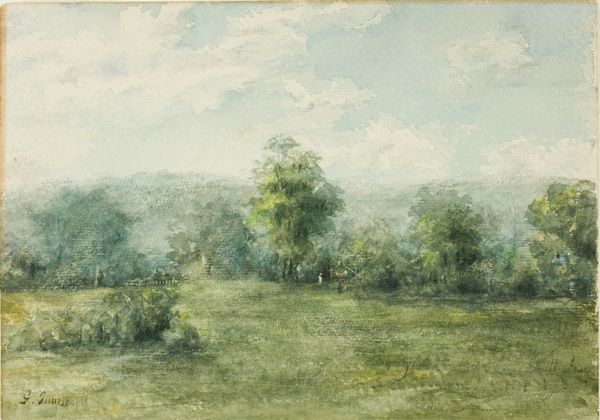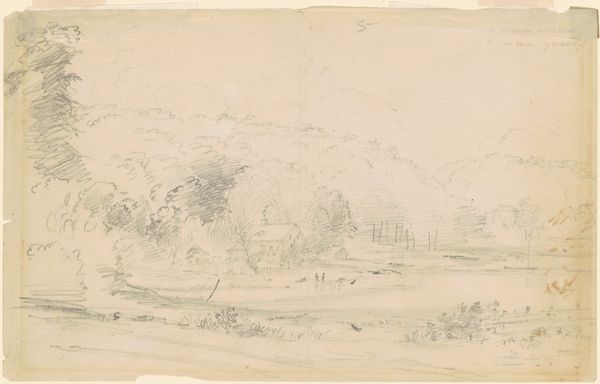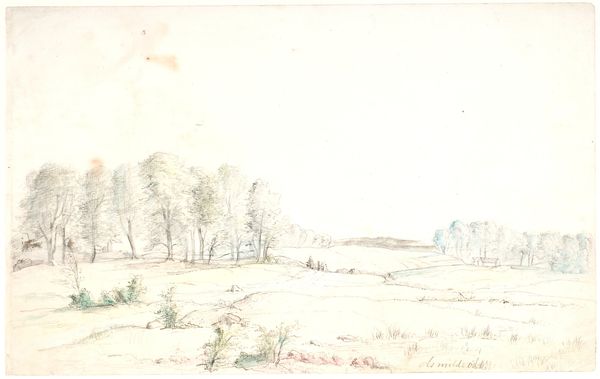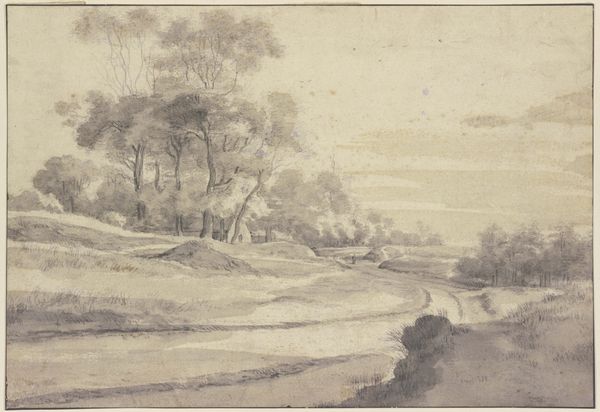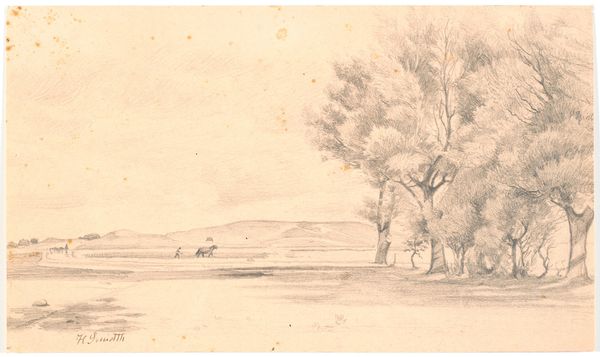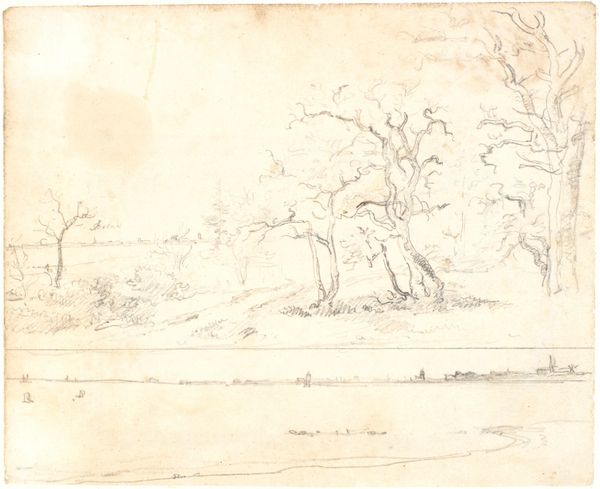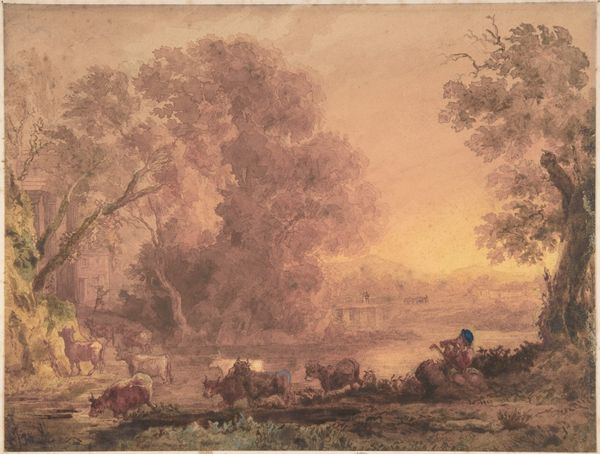
drawing, watercolor
#
drawing
#
landscape
#
watercolor
#
romanticism
#
watercolor
Dimensions: overall: 17.2 x 25.6 cm (6 3/4 x 10 1/16 in.)
Copyright: National Gallery of Art: CC0 1.0
Curator: John Martin's 1847 watercolor drawing, "Gleaners in the Wheat Field," presents a seemingly tranquil rural scene. Editor: My first impression is one of gentle melancholy. The muted colors and the vast expanse of the field evoke a sense of solitude. There’s almost a tonalist simplicity to the hazy scene. Curator: Note how the process of gleaning—collecting leftover crops after the harvest—speaks to a very specific socio-economic reality. This wasn't leisure; it was often the means of survival for the poor. Editor: Certainly. And yet, the romantic style softens the harshness of that reality. Consider the arrangement: the placement of figures on the lower left offsets the concentrated, darkening mass of the tree on the right. It stabilizes the open land and vast, undefined sky, doesn’t it? Curator: Exactly. This idyllic veneer, achieved through the watercolor medium itself—its relative ease and accessibility—veils a deeper story of agricultural labor and land ownership during the period. Editor: I agree, but the technique, too, is compelling. Look at how Martin renders the wheat. He doesn’t define every strand, but uses delicate washes of color to suggest form and texture, particularly near the ground, which amplifies its significance as a subject.. The very translucence of watercolor gives the light a distinct visual weight. Curator: Precisely. That translucence mirrors the precariousness of the gleaners’ livelihood. The limited color palette, likely dictated by the availability of pigments and perhaps the patron's budget, actually strengthens our understanding of this moment's realities. Editor: A beautiful synthesis of technique and emotion. One that reflects, albeit with a degree of romantic idealization, labor relations within the social fabric of 19th-century British society. Curator: Indeed. The interaction between materials and labor reveals so much about how we perceive the world. Editor: Leaving us with much to think about, on many layers.
Comments
No comments
Be the first to comment and join the conversation on the ultimate creative platform.
